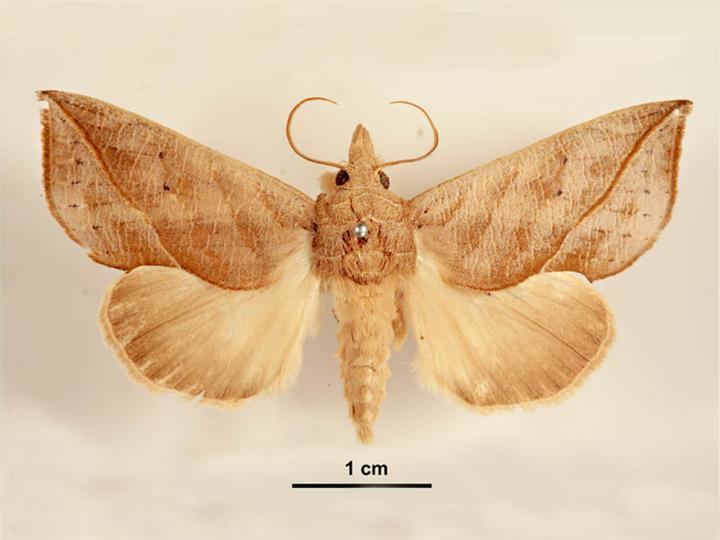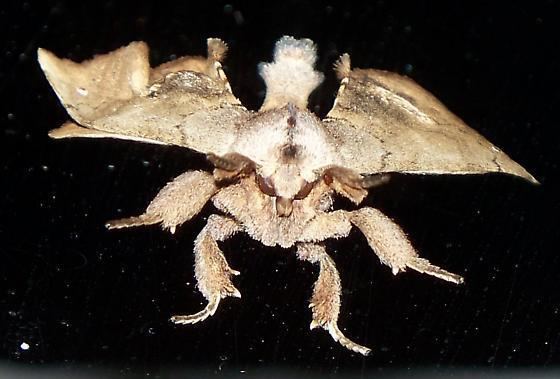Scientific name Calyptra | Rank Genus | |
 | ||
Lower classifications | ||
The genus Calyptra is a group of moths in subfamily Calpinae of the family Erebidae. They are a member of the Calpini tribe, whose precise circumscription is uncertain but which includes a number of other fruit-piercing or eye-frequenting genera currently classified in Calpinae.
Contents
Etymology

The common name of many of these species, vampire moth, refers to the habit that they have of drinking blood from vertebrates. According to a recent study, some of them (C. thalictri) are even capable of drinking human blood through skin. However, the moths are not thought to cause any threat to humans.

Some species of this genus have been classified with genus name Calpe, and they include more than one blood-sucker.
Description

Palpi porrect, where the second joint and third joint fringed below with very long hair. The frontal tuft large. Metathorax with very slight tufts. Abdomen with coarse hair on dorsum. Tibia spineless, but slightly hairy. Fore wings with slightly arched costa. Apex acute, outer margin excurved at vein 3. The inner margin lobed near base and at outer angle. Larva with three pairs of abdominal prolegs.
Habitat

These insects have been changing their habitat in recent years. The species Calyptra thalictri was originally native to Malaysia, the Urals and Southern Europe, but has been turning up in northern Europe. In 2000, they were observed in Finland and in 2008 they were seen further west in Sweden. The Swedish observation was in Skutskär north of the capital Stockholm whilst the sightings in Finland have been more numerous. It is found in southern Finland, in particular in the south east.
The moth Calyptra thalictri has been seen to be associated with the plant meadow-rue.
Penetrating skin

Insects piercing the skin of mammals is familiar in creatures such as mosquitoes, but the moth uses a specially developed proboscis to penetrate the skin of animals, such as buffalo. A species in Malaysia was observed using its hollowed out proboscis which is divided into two halves. The insect rocks the proboscis from one side to the other, applying pressure until it pierces the skin. It then uses a rocking head motion to drill the tube deeper into the skin. The blood pressure of the victim supplies power to raise hooks on the proboscis to ensure the insect is not easily detached. Only male moths exhibit this ability, unlike mosquitoes, where the female is the one that drinks blood.
It is thought that the moth's ability to pierce animal skin and drink blood may have sprung from an earlier ability to pierce fruit in search of juice. Human skin penetrated in this way may turn red and be sore for several hours leaving an itchy rash .Despite the bite being more severe than that of a mosquito, it is believed that the moths don’t pose a risk to humans.
Although it has been reported that moths have bitten humans in Asia, it was not until the summer of 1999 that a Russian scientist, Vladimir Kononenko, observed that this species of moth was capable of filling its stomach with human blood.
